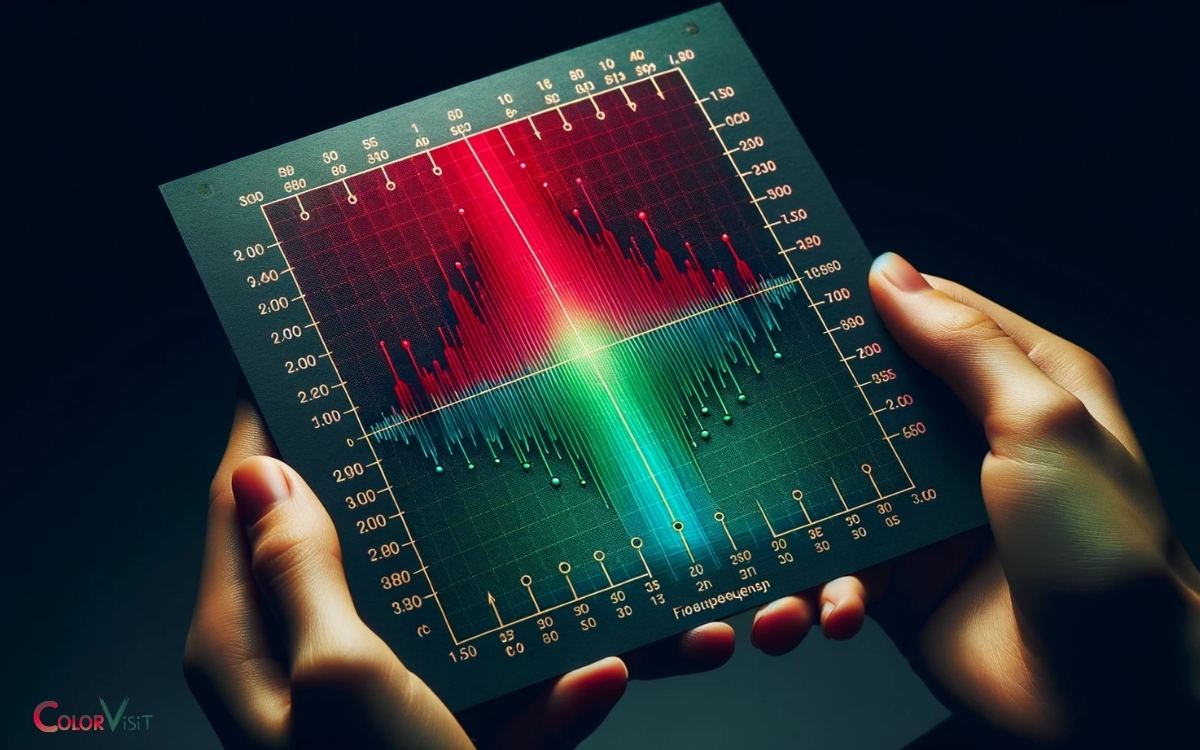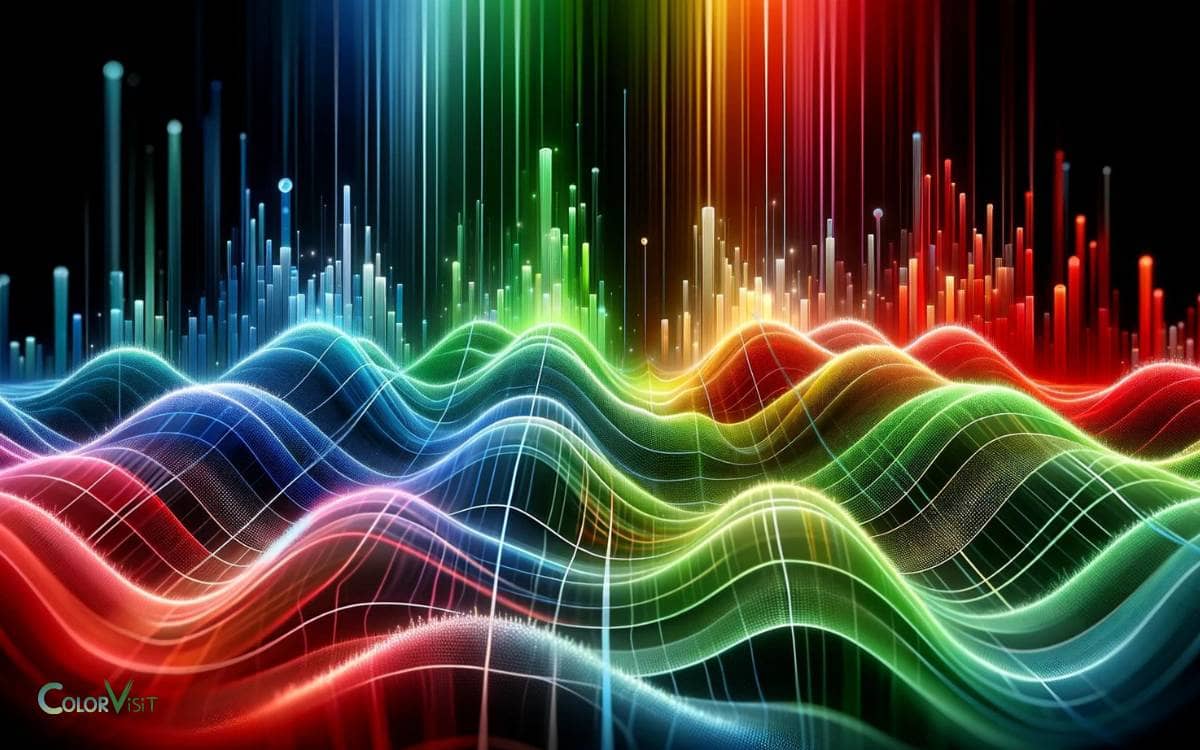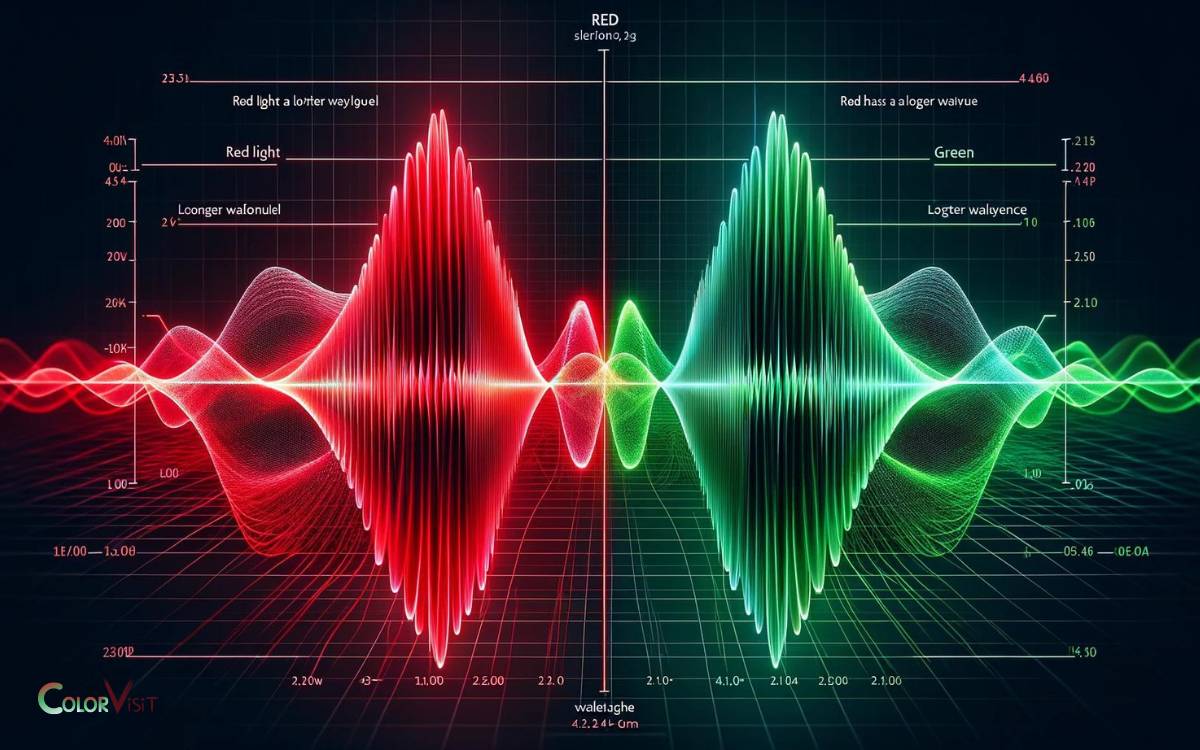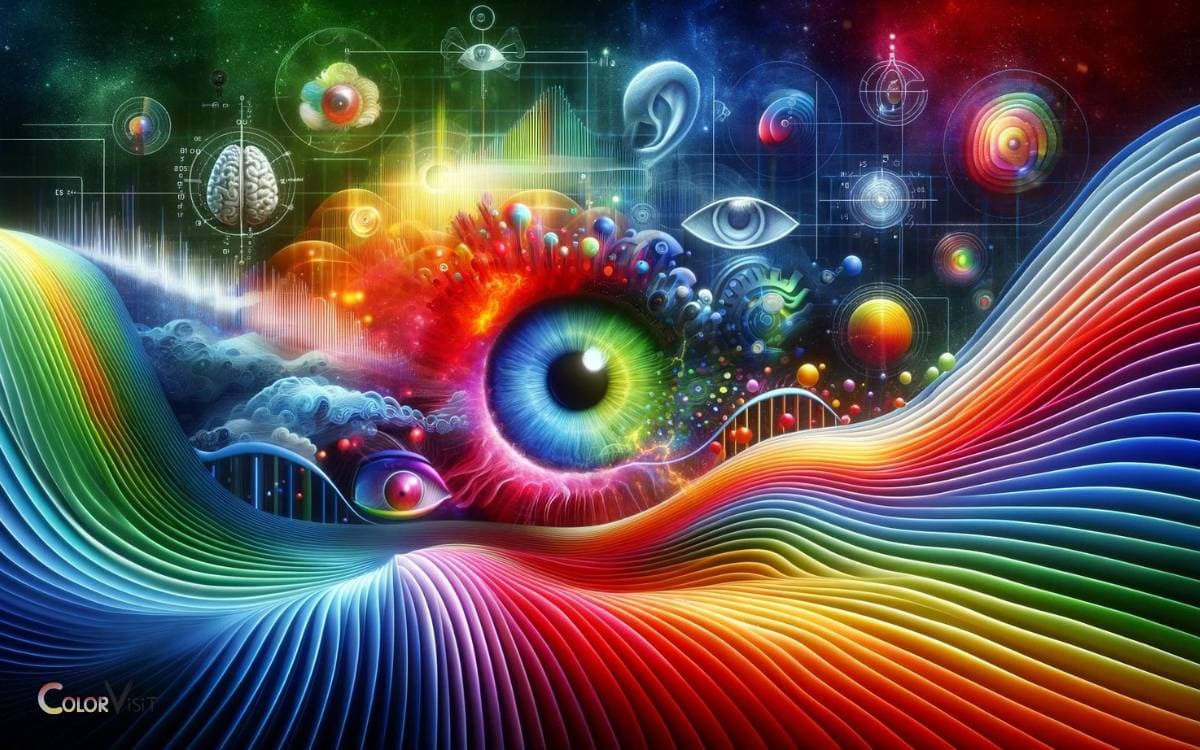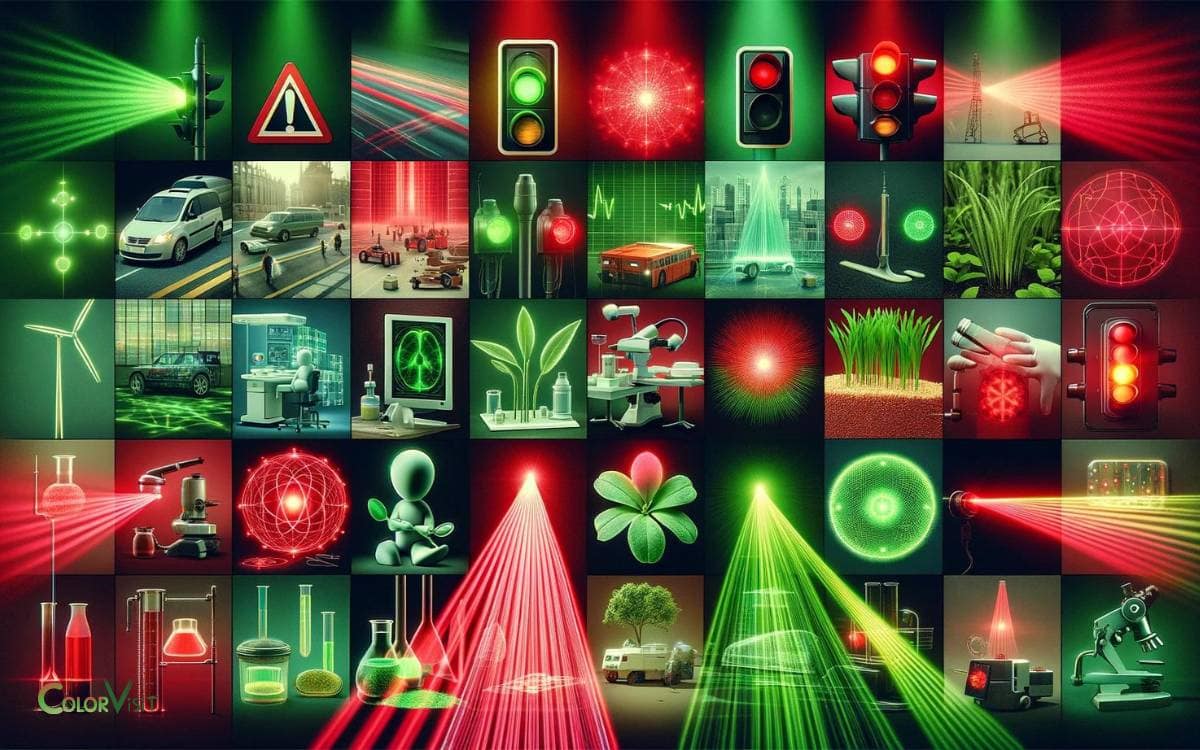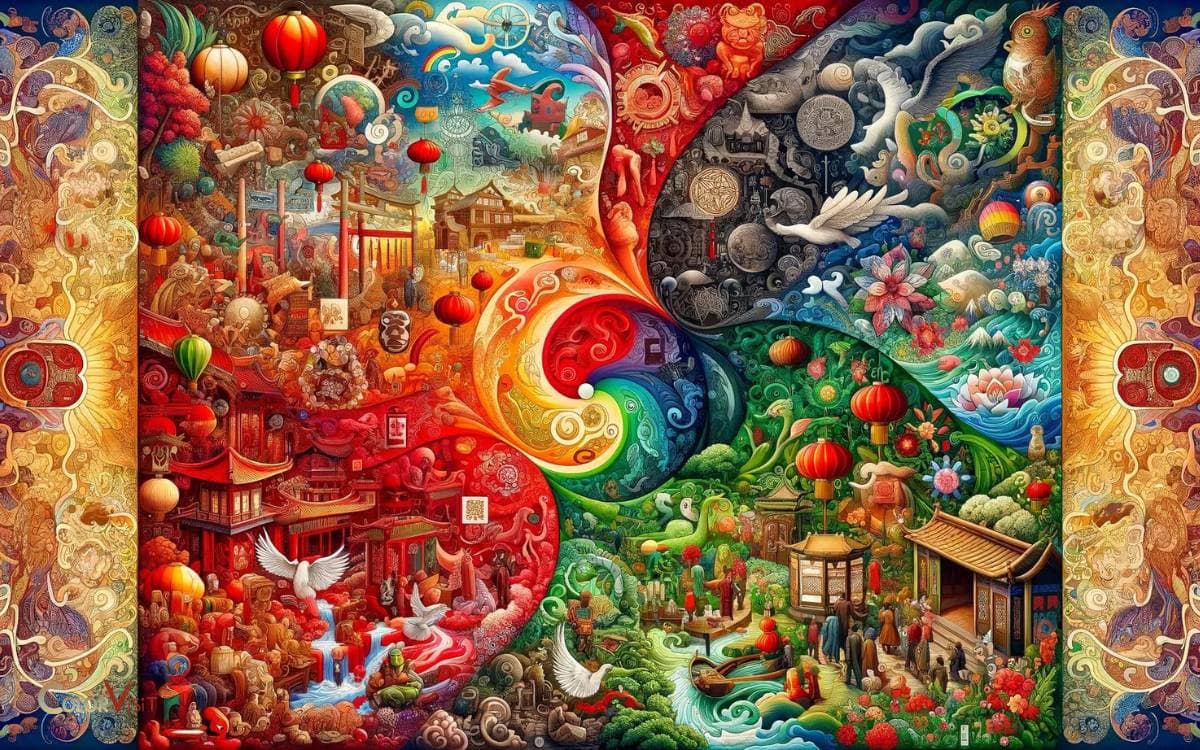Does the Color Red Have a Lower Frequency Than Green? Yes!
Yes, the color red does have a lower frequency than the color green. Red light waves have a frequency range of approximately 430–480 THz, while green light waves have a frequency range of approximately 540–580 THz.
Light waves are categorized by their frequencies, with each color corresponding to a specific frequency range in the visible light spectrum.
The color red is found at the lower end of this spectrum, meaning it has a lower frequency and longer wavelength compared to green, which is located towards the middle of the spectrum.
For instance, if you look at a rainbow, you’ll see red at the outermost band (signifying its longer wavelength) and green closer to the middle.
In essence, the categorization of colors by light wave frequencies gives us the spectrum of visible light we perceive, with red having a lower frequency than green.
Key Takeaway
The Visible Spectrum and Color Perception
In the field of optics, the visible spectrum is defined as the range of electromagnetic wavelengths that are both perceived and distinguishable by the human eye.
- This color spectrum spans from violet, with the shortest wavelength, to red, with the longest.
- Visual perception of color is intricately linked to the frequency correlation of light waves.
- The frequency of light determines the color that is perceived, with higher frequencies corresponding to bluer hues and lower frequencies to redder hues.
- Furthermore, cultural symbolism plays a significant role in color perception, as different societies attribute various meanings and significance to different colors.
Understanding the interplay between the color spectrum, visual perception, frequency correlation, and cultural symbolism is crucial for innovative advancements in fields such as psychology, design, and marketing.
Understanding Light Waves and Frequencies
Light waves are fundamental to understanding the frequencies of colors such as red and green. These waves have distinct properties that influence our perception of color.
Red and Green Frequencies
The frequencies of red and green light can be understood through their respective positions within the visible light spectrum.
Red light has a longer wavelength and lower frequency compared to green light. This is because the frequency of light is inversely proportional to its wavelength.
The table below provides a comparison of the frequencies and wavelengths of red and green light:
| Light Color | Wavelength (nm) | Frequency (THz) |
|---|---|---|
| Red | 620-750 | 400-484 |
| Green | 495-570 | 526-606 |
Understanding the frequencies and wavelengths of red and green light is crucial in various fields, including optics, telecommunications, and lighting technology.
Manipulating these properties allows for innovation in areas such as color display technologies, optical communications, and phototherapy.
Light Wave Properties
Understanding the frequencies and wavelengths of red and green light is essential in various scientific and technological applications, playing a significant role in innovations related to optics, telecommunications, and lighting technology.
- Light wave properties, including frequencies and wavelengths, are fundamental aspects of the electromagnetic spectrum.
- Red light has a longer wavelength and lower frequency compared to green light. These properties are crucial in visual perception, as they influence how we perceive color and light.
- Additionally, these properties have practical implications in fields such as photography, display technologies, and medical imaging.
By comprehensively understanding light wave properties, scientists and innovators can continue to push the boundaries of what is possible in areas such as data transmission, laser technologies, and advanced lighting systems, driving progress and innovation in numerous industries.
Color Perception Differences
Utilizing an article determiner, we can delve into the differences in color perception influenced by the varying light wave frequencies of red and green.
When it comes to human vision, color perception is a fascinating subject, especially considering the evolutionary advantage of color discrimination.
Here are three key points to consider:
- Human Vision: Understanding how the human eye perceives colors through the reception of different light wave frequencies is crucial in comprehending color perception differences.
- Color Perception: The ability to discern between different colors and shades plays a vital role in various aspects of human life, such as communication, safety, and aesthetics.
- Evolutionary Advantage: The evolution of color perception in humans may have provided an advantage in identifying ripe fruits, detecting predators, and enhancing social interactions.
These factors contribute to the intriguing study of color perception differences and its impact on human behavior and evolution.
Red and Green: A Comparison of Frequencies
In comparing the frequencies of red and green, it is essential to understand their distinct electromagnetic wavelengths. Red light has a longer wavelength and lower frequency than green light.
- The frequency comparison is fundamental in understanding how these colors are perceived by the human eye.
- When light enters the eye, it is focused on the retina, where specialized cells called cones are responsible for detecting different wavelengths of light.
- The cones are sensitive to red, green, and blue light, and the brain processes the signals from these cones to create the perception of color.
The differences in frequency between red and green light contribute to the unique color perception differences that humans experience, leading to the rich tapestry of colors that define the visual world.
The Impact of Frequency on Color Perception
The correlation between color and frequency has long been a subject of interest in the field of perception.
The impact of frequency on color perception raises questions about how our brains interpret the electromagnetic spectrum and assign specific hues to different wavelengths.
Understanding the relationship between frequency and color perception is essential for gaining insights into the way we experience and interpret the visual world.
Color and Frequency Correlation
Color perception is influenced by the frequency of light waves corresponding to each color.
The correlation between color and frequency is a fascinating aspect of human perception and has significant implications in various fields.
Here are three key points to consider:
- Color frequency: Each color in the visible spectrum corresponds to a specific frequency of light waves, with red having a lower frequency than green and blue having an even higher frequency.
- Visible spectrum properties: The visible spectrum ranges from approximately 400 to 700 nanometers, with different colors being associated with different wavelengths within this range.
- Impact on perception: The frequency of light waves directly affects how colors are perceived, influencing factors such as brightness, saturation, and the overall visual experience.
Understanding the correlation between color and frequency opens up avenues for innovation in fields such as design, psychology, and technology.
Perception of Color
The perception of color can be significantly influenced by the frequency of light waves associated with each hue.
- Color psychology explores the impact of different colors on human behavior and emotions.
- Neurological responses to color stimuli have been studied to understand how the brain processes and interprets different frequencies of light.
- Research suggests that certain colors, such as red, can evoke physiological responses like increased heart rate and appetite.
- This phenomenon is attributed to the lower frequency and longer wavelength of red light, which stimulates a unique reaction in the human brain.
Understanding the relationship between frequency and color perception can lead to innovative applications in various fields, from marketing and design to healthcare and therapy.
Applications of Red and Green Frequencies
Applications for red and green frequencies are found in a wide range of fields, including medicine, technology, and environmental science.
These frequencies have diverse applications and implications:
- Medical Imaging: Red and green frequencies are utilized in medical imaging techniques such as MRI and CT scans to visualize and diagnose various conditions within the body.
- Optical Communication: In the field of technology, red and green frequencies are used in optical communication systems, including laser technology and fiber optics, enabling high-speed data transmission.
- Environmental Monitoring: Red and green frequencies are employed in environmental science for tasks such as monitoring vegetation health, assessing environmental changes, and studying wildlife behavior.
The utilization of red and green frequencies showcases their versatility and importance in driving innovation across various industries, impacting everything from healthcare to environmental conservation.
Exploring Cultural and Symbolic Meanings
Utilizing an article determiner, red and green frequencies hold significant cultural and symbolic meanings across various societies and traditions.
- The symbolism of red and green extends beyond their physical properties, delving into the realms of psychology, cultural significance, and emotional impact.
- In many cultures, red is associated with passion, love, and power, while green is often linked to nature, growth, and harmony.
- These symbolic meanings can evoke a range of emotions and have a profound influence on human behavior and perception.
- Understanding the cultural and symbolic significance of these colors is crucial in various fields such as marketing, design, and psychology, where color choices can deeply resonate with individuals and societies.
Exploring the intricate web of meanings associated with red and green frequencies provides valuable insights into the human experience and the diverse ways in which colors shape our world.
Conclusion
The comparison of red and green frequencies reveals the complex relationship between light waves and color perception.
While red does not have a lower frequency than green, the impact of frequency on color perception is significant.
Understanding the applications of red and green frequencies is essential in various fields, and exploring the cultural and symbolic meanings of these colors adds depth to their significance in human experience.
